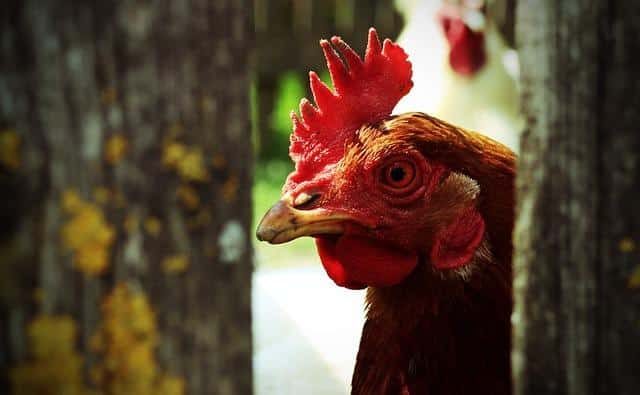I don’t know many farmers who don’t have at least a few chickens. Even dairy farmers I personally know keep a half dozen or more of our feathered friends. The chicken is to a farm what denim jeans are to the everyday American: indispensable and very common.
From fried eggs for breakfast (and chicken and waffles here in the South!) to fried chicken or the oven-roasted bird that graces our dinner table for Sunday lunch – yes sir, the chicken has been feeding Americans since its arrival in the New World with first settlers.
Chickens can produce 200-300 eggs a year or give you 10-14 pounds of white meat per bird. Not bad for an animal that is cheap to purchase and very cheap (or free) to feed. In fact, you can invest once in your first stock of chicks, and never buy another chicken again as long as you breed the birds yourself. Keep them in a pen, use a chicken tractor, or free-range them with other livestock. The chicken is adaptable to almost any environment.
The Best All-Natural Wormer For Your Livestock Is Right Here
Here are five of the most common breed of chickens you will find on the American farm or homestead.
Plymouth Rock: The Plymouth makes a great started breed and can grow to more than nine pounds. This makes them a fine meat-producing bird, and they are also terrific egg-layers. The birds are quite easy-going and are great for beginners. We had several of these birds around the house when I was a kid, and it was on this breed that I “cut my teeth” with chickens. We fed them some corn and let them free-range. Simple as that, and we had a constant supply of eggs and meat.
Jersey Giant. Yee haw, boy, that there is a bird! The Jersey Giant is a large meat bird that can grow north of 12 pounds. They do well as a backyard and homesteading breed and for the small farmer. The hens lay very large brown eggs and most often are a very calm bird. Like the Plymouth Rock, they do fine free-ranging.
Leghorn. This is the iconic white chicken on the family farm. The Leghorn was brought to these shores originally from Italy. These chickens are ideally suited for laying vast amounts of eggs, averaging 280-340 per year. Their eggs are white and are the most common egg you and I purchase in a supermarket. Leghorns are very efficient when it comes to foraging, making them a good choice for your farm. But they are white, which could make them an ideal target for Mr. Fox or Wile E Coyote.
Rhode Island Red. A dual-purpose bird that does not gain the weight of the Giant or Rock. This bird is rust colored and can produce a good amount of eggs and meat for your table. These may be the most common bird on a homestead. They lay brown eggs that are smaller than the Leghorn eggs — and in fewer amounts.
Ameraucanas. These smaller birds are not really a meat chicken; they are far too small for that task. What they are famous for are their eggs. The birds are a little unusual looking, but are quite docile and make a good family pet. They lay blue eggs and are somewhat of a novelty amongst hobbyist and homesteaders. If you like blue eggs for breakfast and the sight of a different-looking chicken running around the yard, then this may be the bird for you.
Related:
Cold Hardy Chicken Breeds You Need For (Lots Of) Winter Eggs
What advice would you give the first-time chicken owner? Share your tips in the section below:
 Off The Grid News Better Ideas For Off The Grid Living
Off The Grid News Better Ideas For Off The Grid Living




